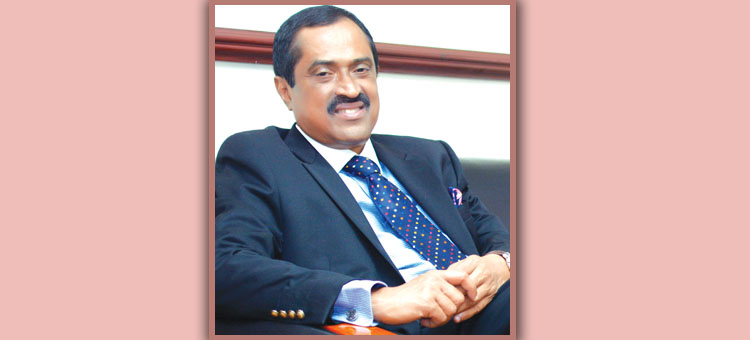Mumbai: As the face of Indian Association of Tour Operators (IATO), E M Najeeb, the newly-appointed Senior Vice President of the national travel trade body shares his vision, responsibilities and priorities for the tourism sector in India and the initiatives planned to make the country a ‘Seamless Destination’. He is also the Chairman and MD of ATE Group of Companies and Executive Director of KIMS Global. Najeeb is the former President of Kerala Travel Mart (KTM) Society.
Newly-appointed IATO Senior Vice President will work towards a dream of combining all the southern states to make an identity of its own as ‘Sunny South India’
How do you see the opportunity that comes with your new role? What are your immediate priorities?
We are trying to make IATO more inclusive and democratic in nature. Besides protecting the interests of the members, we also advocate high ethical standards in the industry.
IATO as usual will be initiating various activities to create value for the members, strengthen relationship with stakeholders in Tourism, and also to systematically engage in promotional measures such as road shows and events marketing the destination.
I am grateful to Pronab Sarkar, President, IATO for acknowledging the contributions of the newly elected office-bearers including me. We have been aiming for more participation from the members and making the activities visible to all. A number of sub-committees have been formed with different responsibilities and the members are enthusiastically joining hands in the activities.
In a recent interview, you had mentioned that the Union Government should address an important issue – seamless travel. Could you please elaborate on this?
I have always been strongly advocating for creating a Seamless Destination for the tourists to move about without hurdles and restrictions. Different tax regimes for interstate travel, and different sets of rules in states, and different patterns of tariffs for facilities and services, create hurdles and barriers which take away the time, money and happiness out of the whole experience.
We need to have a standardised taxation and rules for tourist transportation across state borders. Bringing transportation under the GST would help to standardise taxes across the country. I have been highlighting a dream of combining all the southern states to make an identity of its own as ‘Sunny South India’. India, particularly the Southern region, falls among the Indian Ocean Ring countries like Maldives, Sri Lanka, Singapore, Malaysia, Thailand, and others.
The Southern Peninsula of India has a common attractive feature of a long coastline which offers great opportunities for beach tourism, cruises, fishing experiences and underwater exploration.
A tourist arriving at the Seamless Destination should experience a well-facilitated entry to the country. The formalities of entry, the information system, and all other tourism facilitation systems should be standardised.
There is already a ‘South India State Tourism Ministers’ Conference’ in place and they used to meet and discuss common matters, which should be reactivated for a great outcome. The Ministry of Tourism can work on a ‘Seamless India’ plan for Tourism.
This can help tourists to travel even with one ticket, one pass and a paid-all voucher, unless they are organised by a tour operator. The Ministry can activate and organise Regional Tourism Ministers’ Conferences of different states, in different regions.
How do you view the recent changes made by the GST Council? Is the trade happy?
The introduction of the GST was a good move in standardising the taxation. But, unfortunately, the results are not seen in many areas as the prices have not been reduced.
The hospitality industry has a complaint that only the rooms charging upto Rs. 1000 are exempted from the GST. From Rs. 1000 – Rs. 2500 the tax is 12 per cent, Rs. 2500 – Rs. 7500 it is 18 per cent, and above Rs. 7500 it is 28 per cent. The tax slab for the top segment that is commonly used by high-quality tourists is quite high.
The same kind of accommodation in other nearby destinations are comparatively lesser. As a measure to attract more tourists and to achieve the 20 million tourist target by 2020, the GST rates of 28 per cent for hotel rooms should be reduced to a lower slab.
How do you evaluate the functioning of the Ministry of Tourism?
The Union Ministry of Tourism is more active and enthusiastic under the leadership of the K J Alphons, Union Minster of State for Tourism (I/C).
The Ministry of Tourism as a whole is led by a set of able and efficient officers like Rashmi Verma IAS, Secretary Tourism; Bipin Bihari Mallick IAS, Additional Secretary, Suman Billa IAS, Joint Secretary; Satyajeet Rajan IAS, Director General of Tourism among others. I find that the Ministry understands and addresses the needs of the tourism industry in India and cooperates and supports us in all possible ways.
One of the main reasons Adventure Tourism is not taking off in India is lack of accessibility. To tackle this, IATO has been suggesting opening of airstrips in remote locations. What is your take on this?
The challenges of Adventure Tourism in India are more than mere accessibility. Adventure Tourism requires a range of facilities such as well thought out adventure locations, accessibility, tourist facilities, safety and security equipment, emergency medical facilities, and also emergency evacuation arrangements. I strongly feel that without these in place, destinations should not be promoted as Adventure Tourism hubs.
IATO has been requesting the authorities to direct domestic airlines to provide free baggage allowance of 20 kg. What’s the status?
The allowance of 20 kg baggage on domestic airlines is a pressing need. We are yet to receive a final decision on this. The Government should make this a high-priority matter and act accordingly at the earliest.





